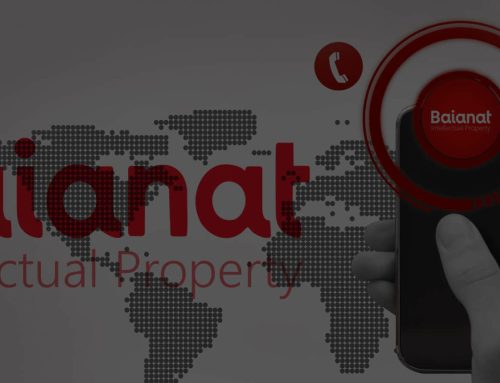As an artist, Intellectual property rights should be a point to rely on in your creative path So, “What protects intellectual property created by artists?” should be a question that grabs the attention of any creative, for its importance in protecting your art, and giving you an exclusive right to copy, sell, distribute it.
There are many artists, musicians, lyricists, graphic designers and fashion designers who are unaware of the importance of protecting their work through intellectual property rights. Here’s a closer look at What protects intellectual property created by artists?
What are the intellectual property rights of artists?
Intellectual property right for artists is a term that refers to the property rights of any creative or any intellectual process, that might be an invention, design, or artwork. Those rights are legal tools that allow creatives and artists to protect their work from infringement and may also generate income from it.
By registering your art, you will be able to share it without worry by creating a public record that legitimizes your claim that this is your original work. So, let’s get back on track and answer our main question What protects intellectual property created by artists?
after knowing about What protects intellectual property created by artists? .. read more on baianat ip website
How to protect your product from being copied
What protects intellectual property created by artists?
Pieces of art are valued not only because they have a unique style but also because they are one-of-a-kind, so as an artist your success is mainly dependent on the uniqueness of your art.
creative works, innovations, literary, symbols and industrial product designs are all different types of intellectual property created by artists. Intellectual property rights prevented any use of your work without your permission as an owner of that work, and financial compensation may also take place.
There are three major modules of intellectual property rights; copyrights, trademarks and patents. Copyright protects art and writings. Trademark protects names, slogans and symbols. Patents protect inventions; as an artist or designer, you should be aware of those forms of intellectual property rights:
-
Copyright:
Copyright is What protects intellectual property created by artists to get an exclusive right to copy, sell, distribute, publicly perform, and authorize a third party to sell or make derivative works out of it, which makes it illegal for anyone else to use, copy or make a profit from it without your permission, but your work has to meet the copyright terms and conditions and meet a certain creative level of a piece that can be copyrighted. Copyrights can be applied to:
- Literary works.
- Motion pictures and other audiovisual work.
- Pictorial, graphic and sculptural work.
- Dramatic work.
- Pantomime and choreographic work.
- Musical work.
- Sounds recordings.
- Architectural work.
2.Trademark:
As an artist, you should also know the difference between copyright and trademark. A trademark is a source indicator and it may be a logo, phrase or word that denotes who made that work, but this doesn’t protect artists the same way as the copyright but is considered as a legal layer to protect your art from being used by others. famous trademarks are MCDONALDS, APPLE.
3.Industrial design:
It will give the artist an exclusive right to a new ornamental design. Industrial design is one of intellectual property created by artists that focuses on a combination of aesthetics and user-focused considerations, and also provides solutions for problems of form, function, sustainability and brand development. An excellent example of industrial design is the Coca-Cola bottle which is recognised by most people.
What is artistic ownership and what are art ownership rights?
Artistic ownership is one of the legal rights given to artists to use, give away and possess their artwork. And is categorised into two, tangible and intangible artistic ownership.
When an artist creates artwork, he owns both the physical artwork and the copyright in the artwork, the ownership of the artwork copyright is a sort of intellectual property right while physical artwork ownership is a personal property right. selling this artwork doesn’t mean that the copyright is transferred too.
If art couldn’t be owned so no commercial market would be there for it, and hence, no art theft would occur too, as to steal something must be owned first. in addition, artistic ownership builds trust with people that’s why art ownership rights are so important to any artist.
after knowing about What protects intellectual property created by artists? .. read more on baianat ip website
Types of intellectual property rights
Artist copyright statement
Copyrights are not a sign of selfishness or narcissism; when an artist produces a work, he would probably want to ensure the right to use, market or sell his original work, and to protect his artwork from being stolen or distributed without his approval or even knowledge.
A copyright statement is a short statement giving full ownership to the creator of an original work to protect his exclusive rights, and it can make a significant contribution to what protects intellectual property created by artists.
One of the copyright statement’s advantages is in addition to protecting your rights, it can also make your work an asset, it can be worth lots of money in the future and even be used in financial collateral; another plus advantage after you copyrighted your work it might attract interested parties so, you can start with licensing which is a legal authorization given by you to other parties to allow them to use your copyrighted work or part of it.
How to Create a Copyright Statement?
- Find out if Your Work is Protected by Copyright.
- Create a suitable Symbol.
- Identify the Publication year.
- State Your name or the copyright owner’s name.
- Put the Copyright Notice on your work.
- Include a Rights Statement.
Artist copyright statement example
Photos and other forms of digital art usually have a copyright statement near the bottom of the work or a watermarked label, YouTube videos often have a copyright notice in the video description or video credits, and Books or E-Books often have a copyright page at the beginning or end of the book, The standard copyright format used for websites copyright is the footers.
Ex: This website and its content are copyright of [business name] – © [business name] [year]. All rights reserved.
Protecting artist copyright – Baianat IP
Baianat IP was always able to protect the intellectual property created by artists and designers. Over its legal history, and has frequently taken action on behalf of artists whose IP is used without their agreement. get in touch with our professionals to know more about what protects intellectual property created by artists and how to protect and defend your original work.
follow us on Pinterest baianat ip











